By Anne-Sophie Fortin
You may find this blog post also at https://www.oceanblogs.org/meteor184. In addition, you can follow Meteor’s position and path at https://beluga.geomar.de/m184.
POLAR LIGHTS, RED MOON, AND SHOOTING STARS
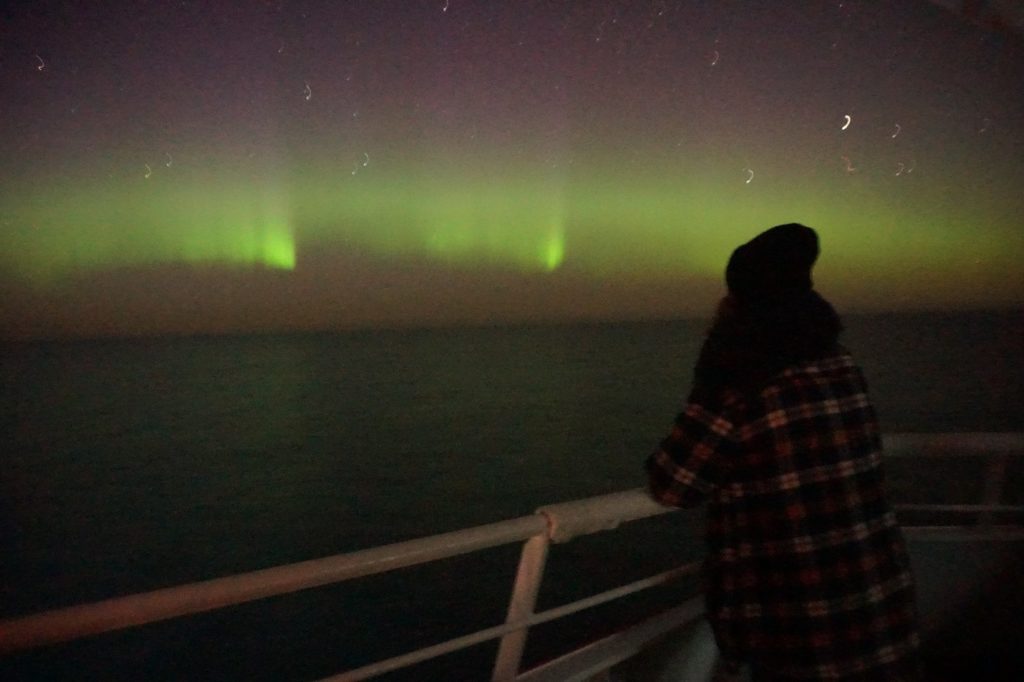
Nature showed its artistic talents today. After a few days in the fog, we finally had a clear sky.
As the sunset painted the sky and the water in warm colours, a red half-moon rose slowly at the horizon. Gradually, the milky way illuminated the sky along with some shooting stars. All of a sudden, greenish lights appeared on the horizon, fulfilling the wish of many of us to contemplate polar lights.
MAINTENANCE OF THE 53N ARRAY
Lately, our work is mostly about the maintenance of the moored instruments of the 53oN array that are near the Labrador Shelf. The maintenance of the 53oN array consists of recovering and cleaning the moorings, refurbishing or replacing the instruments and calibrate them, and finally, deploying the mooring at the same location. This takes a lot of time and effort, but it is not so much of a burden as everyone is motivated to help with this important task.
MOORING DEPLOYMENT
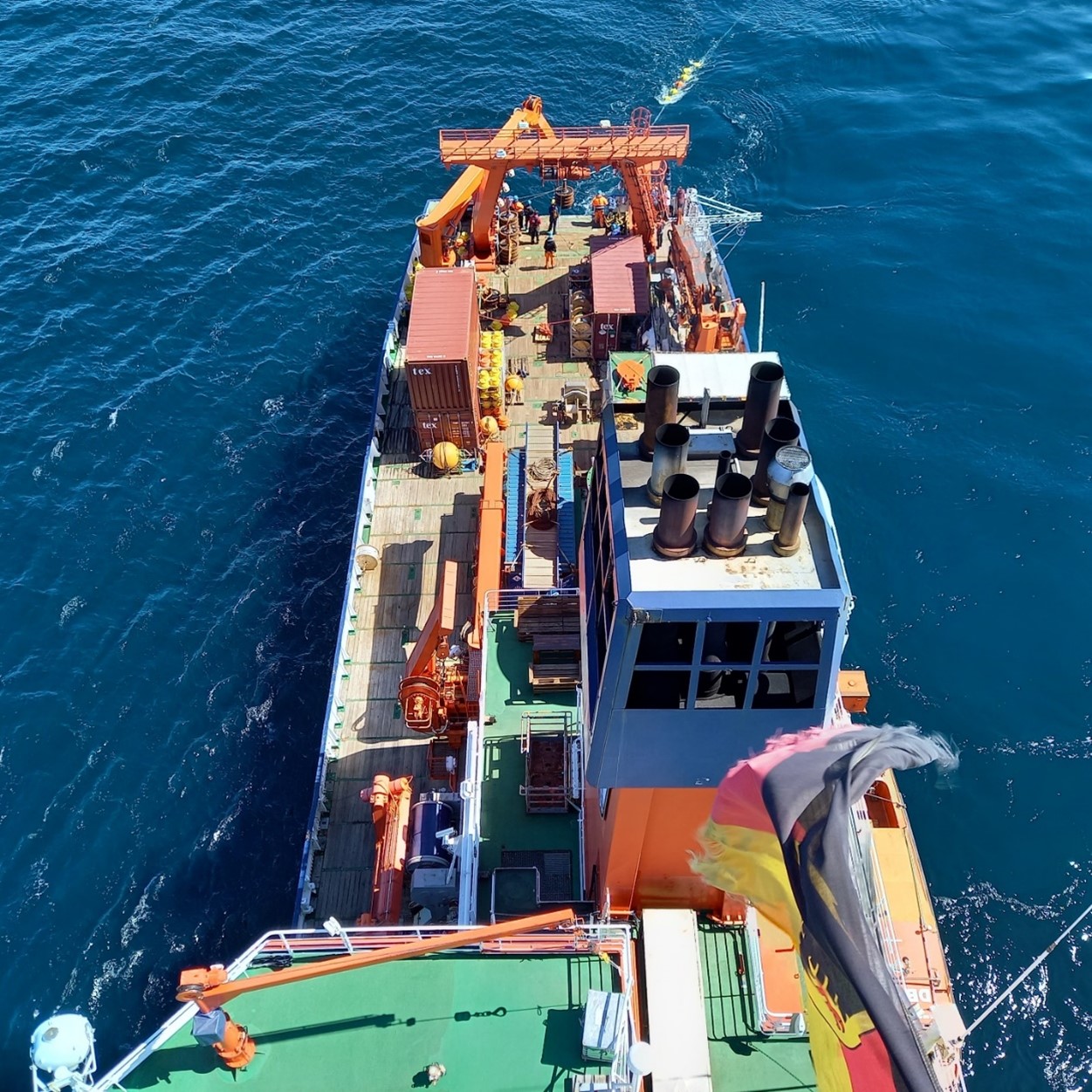
After mooring recovery, maintenance, and calibration it is now time for mooring deployment. The moored instruments are fixed in intervals on a very long cable as we want to measure water mass fluxes from the surface to the ocean floor. Thus, to deploy a mooring, we need to steam slowly as we unwind the cable and the instruments fixed to it in the water. Finally, we tie the cable to an anchor and let it dive to the ocean floor.
SURFACE TO THE OCEAN FLOOR SURVEY WITH THE CTD-ROSETTE
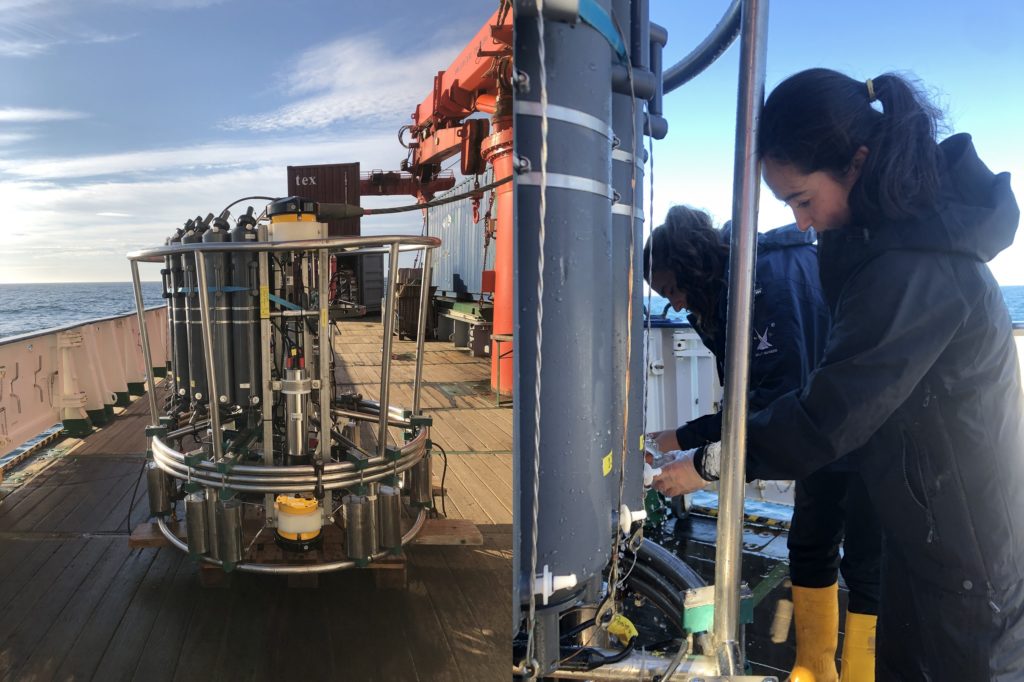
As we move along the 53oN Array, we are performing “CTD casts” which consist of lowering a CTD-Rosette to the ocean floor and pulling it back up on deck. A CTD is an instrument that precisely measures the Conductivity and Temperature at every Depth. We can then compute the salinity from the conductivity and the temperature. A Rosette samples seawater at selected depths in so-called “Niskin bottles”. From an analysis of the seawater, we can determine the concentration of nutrients, salt, dissolved oxygen, and dissolved inorganic carbon.
The CTD casts also serve to calibrate the moored instruments of the 53oN Array. To do so, we attach the instrument to the CTD-Rosette in between their recovery and deployment. The pair of datasets that are generated by the instruments belonging to the 53oN Array and the CTD is then used for the instrument calibrations.
GLIDER RECOVERY IN A ZODIAC
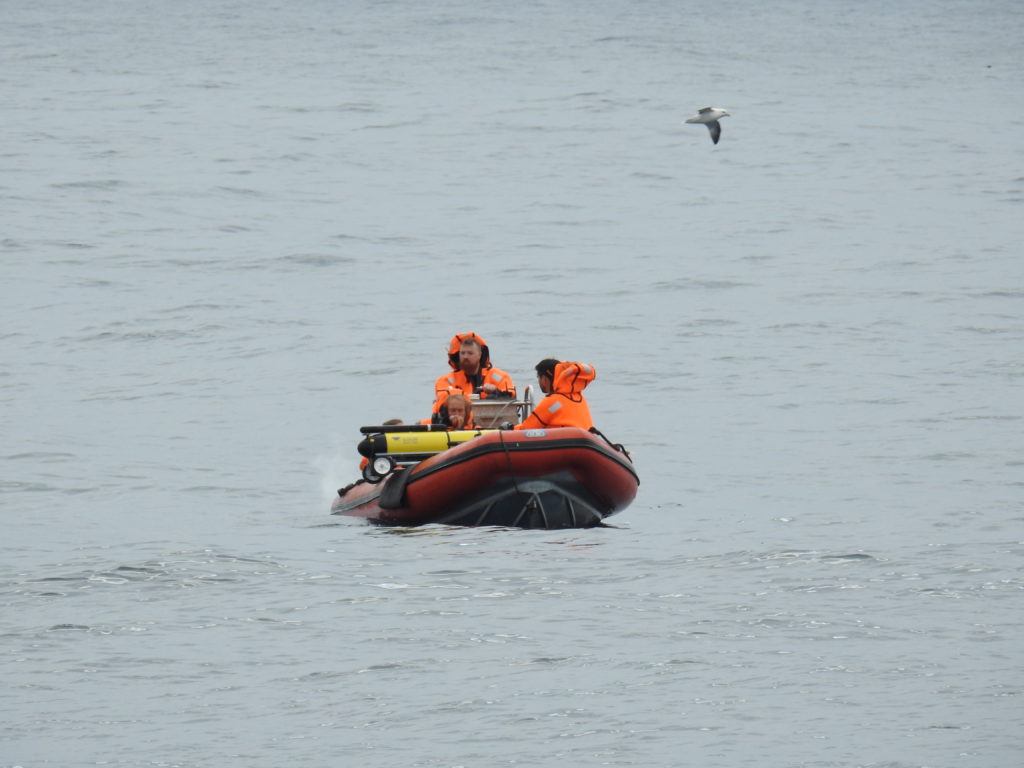
After one week of measurements, the glider was successfully recovered today. As it is a somewhat delicate instrument, some of us took a zodiac to bring it back to the ship. The member of the expedition had to wear a survival suit in case someone would have fallen into the cold water of the Labrador Sea.
RELEASE OF SAMS PRESSURE SENSOR

We deployed a highly sensitive bottom pressure instrument from the Scottish Association of Marine Science (SAMS) that will takes measurements for the next 10 years. This instrument is one of a set of two designed to measure the sea surface height across the North Atlantic.
The difference in sea surface heights across the North Atlantic is currently measured by satellites and is used in the computation of the overall meridional water mass transport. By deploying these new instruments SAMS aims to make more accurate observations of this difference in sea surface heights so that scientists can better estimate the Atlantic circulation.
EDDY SURVEY
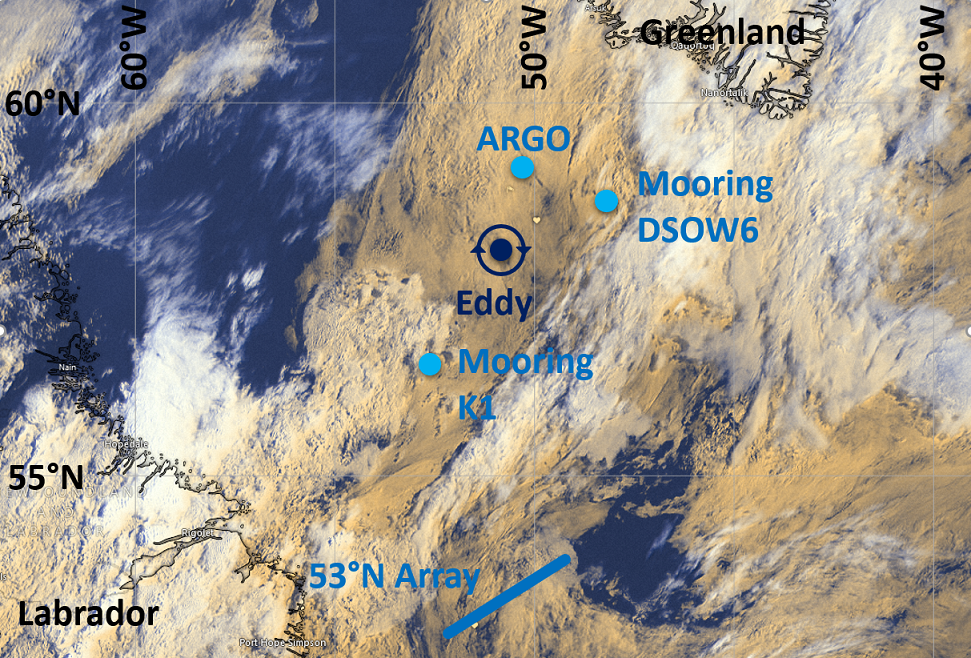
If the marine life would have weather forecasts, they would have eddies maps. Eddies are circular currents of tens to hundreds of kilometers in diameter and a lifetime of about a month. They can be seen on satellite imagery as minimums and maximums of sea surface heights and sea surface temperatures.
On our way to recover moorings and a defective Argo float, we purposely made our way into one of these eddies, found its center by measuring velocities, and started to deploy instruments (Hereon Drifters, CTD casts, MVP) from the center and along our way out.
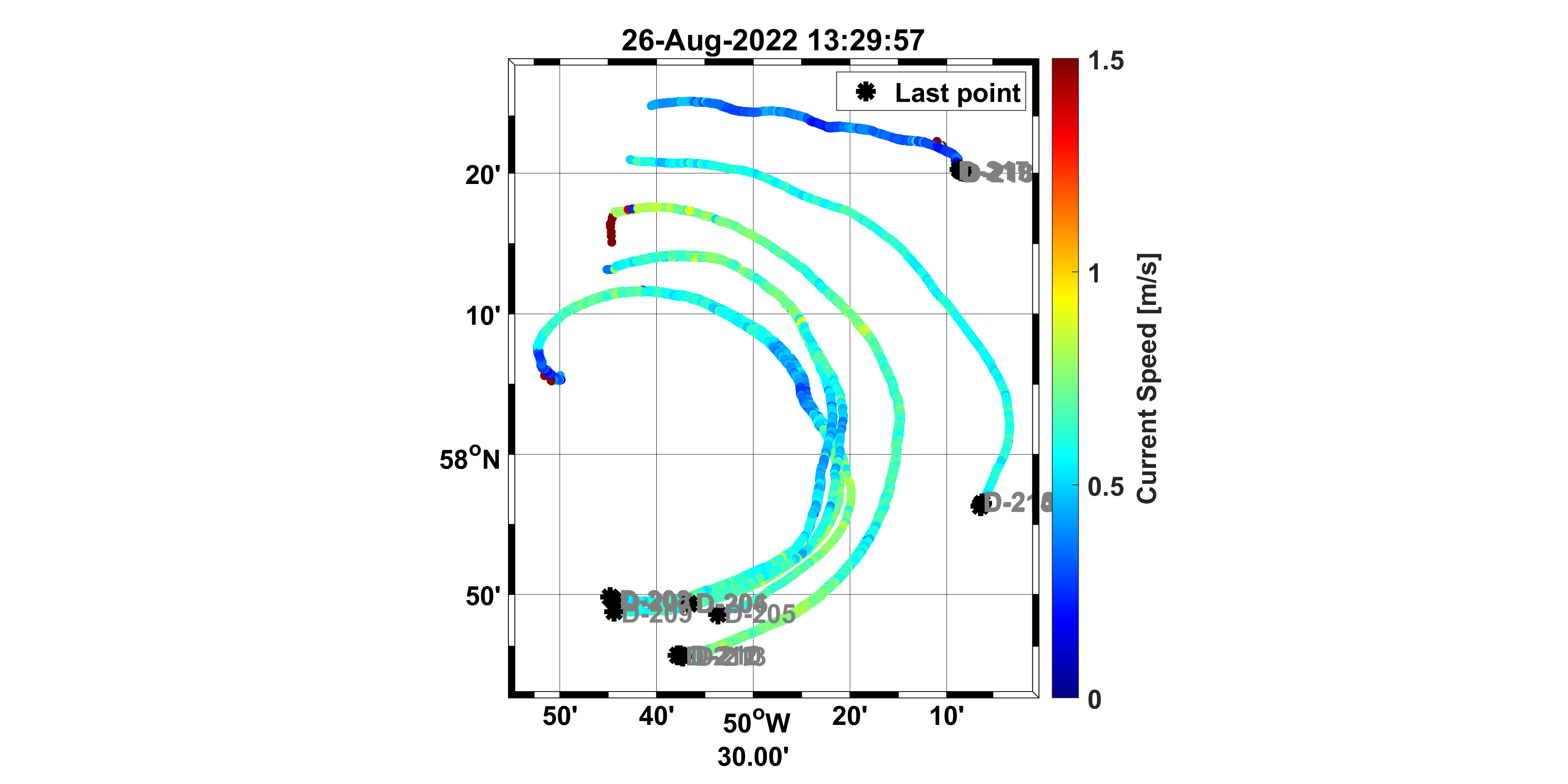
As this eddy is rotation clockwise, we expect that the Hereon Drifters launched along our way out of the eddy will do a couple laps in a clockwise manner for the next couple of weeks. Among the scientific crew, bets are being made on how long it will take for the drifters to make a lap and which drifter will be the first to do so. We have the theory to get an estimate, but real eddies are not perfectly circular as in our textbooks…
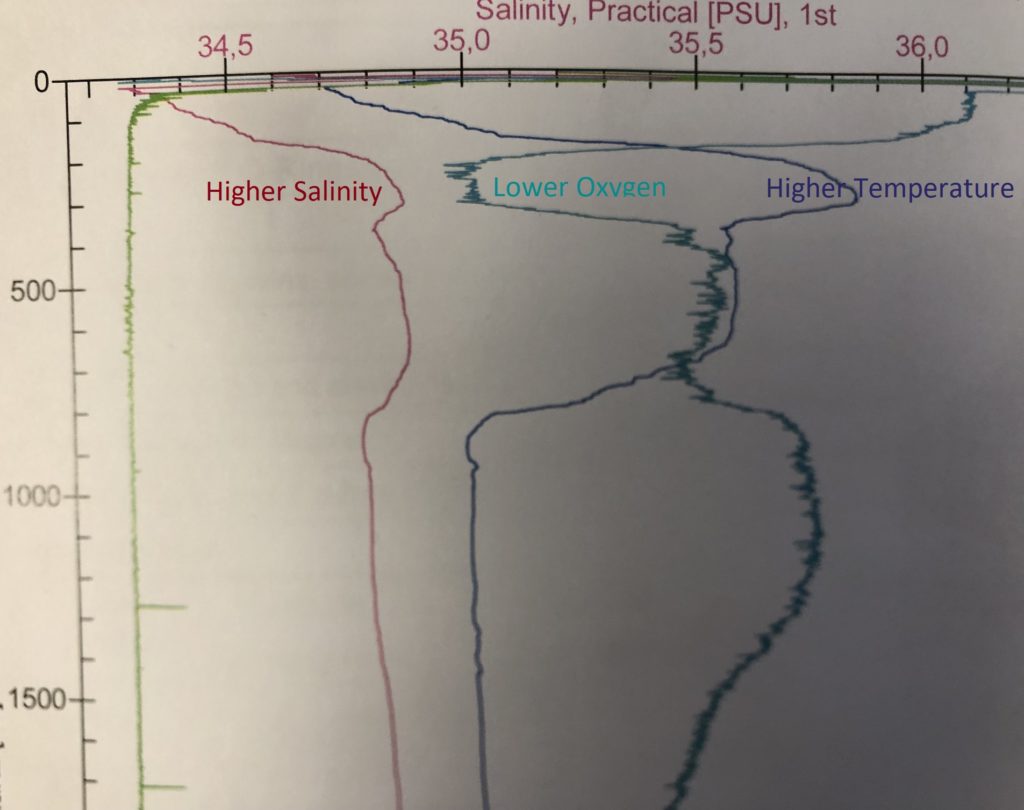
We also expected the eddy to have properties from the Greenland Current, i.e., to be warmer, saltier, and lower dissolved oxygen concentration than the Labrador Sea water mass. That is because we think that the eddy originated in the Greenland Current and moved to the interior of the Labrador Sea without mixing with the water outside the eddy. Our first CTD at the eddy center proved us right. In the eddy core, which extends from about a few tens of meters below the surface to about a thousand meters at depth, we saw well-mixed higher temperature and salinity, and lower dissolved oxygen than the typical values we are used to see in the Labrador Sea.